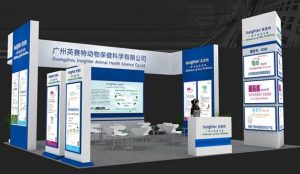http://www.feedadditive.com/docs/Dietetic-supplementation-with-butiric-acid.-what-is-the-evidence.pdf
Butyric acid is a short chain fatty acid with a central role in the metabolism and homeostasis of the digestive system, specially of the colon.
It is mainly provided to the body through the microbial fermentation of dietetic fiber, but also to a lesser extent through a few foods which content different chemical forms of butyric acid, although they are in very small quantities.
Due to the important positive butyric acid actions over the development of the intestinal epithelium, the balance of intestinal microbiota, the intestinal permeability and its noticeable anti-inflammatory effect, there have been many studies about the possible therapeutic usage of the supplementation with this short chain fatty acid in gastrointestinal pathologies, like:
- Inflammatory bowel disease (Ulcerative Colitis and Crohn Disease)
- Irritable bowel syndrome
- Colon cancer
- Constipation
- Diarrhea
- Travelers diarrhea
- Antibiotics associated diarrhea
Some of the main clinical trials and other possible therapeutic usages are detailed next:
216 patients with ulcerative colitis showed an incomplete response to standard mesalazine treatment. The treatment proposed included mesalazine, butyric acid and inuline, being effective in reducing disease activity with a marked improvement of symptoms and in the endoscopic appearance of mucosa.
Combined butyric acid/mesalazine treatment in ulcerative colitis with mild-moderate activity. Results of a multicentre pilot study. Minerva Gastroenterol Dietol. 2008 Sep;54(3):231-8.
25 patients with ulcerative colitis completed this clinical trial in two groups, where one group treatment was mesalazine and the other was mesalazine plus butyric acid. The results of the present study indicate that oral butyrate is safe and well tolerated. These data also suggest that oral butyrate may improve the efficacy of oral mesalazine in active ulcerative colitis and prompt the need of a large scale investigation to confirm the present findings.
Combined oral sodium butyrate and mesalazine treatment compared to oral mesalazine alone in ulcerative colitis: randomized, double-blind, placebo-controlled pilot study. Dig Dis Sci. 2000 May;45(5):976-81.
After 4 weeks there was a significant decrease of pain during defaecation in the microencapsulated sodium butyrate group versus the placebo group, which extended to improvement of urgency and bowel habit at 12 weeks of treatment in this trial of sixty-six patients with irritable bowel syndrome.
Microencapsulated sodium butyrate reduces the frequency of abdominal pain in patients with irritable bowel syndrome. Colorectal Dis. 2013 Feb;15(2):204-9.
This article describes how butyric acid supplementation seems to be a promising therapy for irritable bowel syndrome. It is worth noting that no side effects were observed during treatment, which confirms the safety of its use in clinical practice.
Butyric acid in irritable bowel syndrome. Prz Gastroenterol. 2013;8(6):350-3.
42 adult patients planning to travel to subtropical countries were enrolled in the study and randomized into a study group receiving butyric acid supplementation or placebo. In comparison to the control arm, the study arm noted significantly reduced occurrence of Travellers’ diarrhoea, being safe and may constitute a new method of travellers’ diarrhoea prevention.
Sodium butyrate and short chain fatty acids in prevention of travellers’ diarrhoea: a randomized prospective study. Travel Med Infect Dis. 2014 Mar-Apr;12(2):183-8.
The present study demonstrated that simultaneous treatment with LGG and tributyrin prevents antibiotic-induced downregulation of genes and proteins involved with intestinal fluid and electrolyte homeostasis and intestinal barrier function in the intestinal tract.
Lactobacillus GG and tributyrin supplementation reduce antibiotic-induced intestinal injury. JPEN J Parenter Enteral Nutr. 2013 Nov;37(6):763-74.
This article presents the potential beneficial mechanisms of action of butyric acid in defecation disorders, which are primarily associated with reductions in pain during defecation and inflammation in the gut, among others.
Butyric acid in functional constipation. Prz Gastroenterol. 2013;8(5):295-8.
This study shows the effects of tributyrin on growth, differentiation and vitamin D receptor expression in a human colon cancer cell line. Tributyrin was more potent in inhibiting growth and inducing cell differentiation than natural butyrate. The effect was further enhanced after addition of physiologic concentrations of dihydroxycholecalciferol.
This may provide a useful therapeutic approach in chemoprevention and treatment of colorectal cancer by the two nutrients occurring naturally in human diet.
Tributyrin, a stable and rapidly absorbed prodrug of butyric acid, enhances antiproliferative effects of dihydroxycholecalciferol in human colon cancer cells. J Nutr. 2001 Jun;131(6):1839-43.
The research about administration forms of butyric acid is aimed to assure that the ingredient reaches the final part of the intestine, and tributyrin seems to work as a prodrug of butyric acid, being a triglyceride that liberate butyric acid by the action of enzyme lipase.
Clinical and pharmacologic study of tributyrin: an oral butyrate prodrug.Cancer Chemother Pharmacol (2003) 51: 439.
Finally, note the article published in the World Journal of Gastroenterology: “Potential beneficial effects of butyrate in intestinal and extraintestinal diseases” in which they are reviewed and summarized the main trials and research on the wide range of clinical uses of butyric acid.
Potential beneficial effects of butyrate in intestinal and extraintestinal diseases. World J Gastroenterol. 2011 Mar 28; 17(12): 1519–1528.
David Manrique @ManriqueDVD
María Eugenia González @EuNutricion



